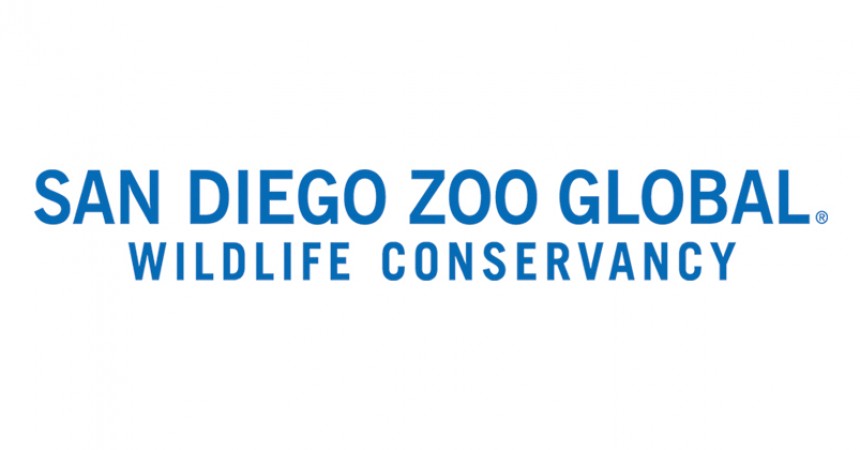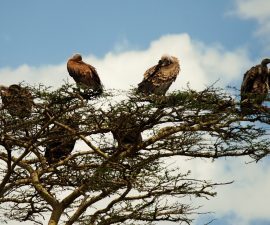 On Friday, April 17th, the Mangrove Finch Project team transported eight captive-reared mangrove finches back to Isabela Island to begin the careful process of preparing the birds for their release. The Mangrove Finch Project team, led by the Charles Darwin Foundation (CDF) and the Ecuadorian Ministry of Environment via the Galápagos National Park Directorate (GNPD), in collaboration with San Diego Zoo Global and Durrell Wildlife Conservation Trust, is in the second year of its effort to save the critically endangered mangrove finch.
On Friday, April 17th, the Mangrove Finch Project team transported eight captive-reared mangrove finches back to Isabela Island to begin the careful process of preparing the birds for their release. The Mangrove Finch Project team, led by the Charles Darwin Foundation (CDF) and the Ecuadorian Ministry of Environment via the Galápagos National Park Directorate (GNPD), in collaboration with San Diego Zoo Global and Durrell Wildlife Conservation Trust, is in the second year of its effort to save the critically endangered mangrove finch.
During February 2015, eggs and one wild hatchling were collected at Playa Tortuga Negra, Isabela Island. Eight fledglings were captive reared at the Charles Darwin Research Station’s (CDRS) facility on Santa Cruz Island. The fledglings were reared and cared for around the clock by a team led by San Diego Zoo Global and expert staff and volunteers from the Charles Darwin Foundation and Durrell Wildlife Conservation Fund.
The mangrove finch (Camarhynchus heliobates), the rarest of “Darwin´s Finches,” has an estimated population size of just 80 individuals, with fewer than 20 breeding pairs. Research shows that the introduced parasitic fly Philornis downsi is one of the principal causes of high nestling mortality, with as much as 95% of nestlings dying during the first months of the breeding season in natural conditions.
Upon arrival at Playa Tortuga Negra, the eight fledglings will be placed in small cages suspended inside the pre-release aviaries. The birds will be released into aviaries built for the purpose and held for 3 to 4 weeks to adapt to life in the wild. During this time, the aviaries will be filled with fallen trunks, bark, fresh leaves and branches and leaf litter. Natural foods of mangrove finches, like live locally caught insects, will be released into the enclosures to encourage natural foraging. Eventually the aviaries will be opened and the birds will then be free to leave. Aviary entrances will be left open, and supplementary food will be provided should the birds return. Tiny transmitters weighing 0.3g will be attached to the tails of the fledglings prior to release so the field team can monitor their initial distribution and survival for up to 22 days.
Intensive conservation management to increase the number of fledglings produced each year was initiated in 2014 by the Mangrove Finch Project team. For the first time in the Galápagos, eggs were collected from the wild, transferred to Puerto Ayora and then captive reared. Fifteen fledglings were successfully released back into the wild in May 2014. Due to the tiny population of the mangrove finch, and with no viable technique to protect wild nests from P. downsi parasitism at present, the collection of eggs and the captive rearing of nestlings is a successful strategy that will continue.
The Mangrove Finch Project is a bi-institutional project carried out by the Charles Darwin Foundation and Galápagos National Park Directorate, in collaboration with San Diego Zoo Global and Durrell Wildlife Conservation Trust. The project is supported by Galápagos Conservation Trust, The Mohamed bin Zayed Species Conservation Fund, Durrell Wildlife Conservation Trust, The Leona M and Harry B Helmsley Charitable Trust, Galápagos Conservancy, and The British Embassy in Ecuador. Thank you also to Lindblad Expeditions and Metropolitan Touring for providing their tourist boats to help transport the eggs to the incubation facility.
Bringing species back from the brink of extinction is the goal of San Diego Zoo Global. As a leader in conservation, the work of San Diego Zoo Global includes onsite wildlife conservation efforts (representing both plants and animals) at the San Diego Zoo, the San Diego Zoo Safari Park, and San Diego Zoo Institute for Conservation Research, as well as international field programs on six continents. The work of these entities is made accessible to children through the San Diego Zoo Kids network reaching out through the Internet and in children’s hospitals nationwide. The work of San Diego Zoo Global is made possible by the San Diego Zoo Global Wildlife Conservancy and is supported in part by the Foundation of San Diego Zoo Global.





